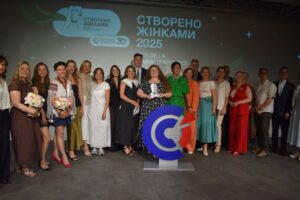
On July 10, 2025, the Franco-Ukrainian Chamber of Commerce and Industry (CCIFU) awarded Ukrainian women entrepreneurs for the seventh time as part of the “Created by Women” competition aimed at supporting female entrepreneurship.
This year, the competition received 435 applications from businesswomen from different regions of the country with projects in a wide variety of fields: agriculture, education, health, defense, sustainable technologies, traditional Ukrainian crafts, and more.
It was extremely difficult for the jury to select the winners, as all the contestants were strong and worthy.
The ten finalists were narrowed down to one winner: Iryna Koval, head of Brammer LLC (Kyiv), who received 200,000 UAH from CCI France Ukraine to develop her business, as well as free membership in the CCFU for one year.
BRAMMER is part of a group of companies that has been involved in metalworking for over 15 years, and with the start of the full-scale invasion, it switched to the production of Brammer tactical wheelchairs, which serve as evacuation vehicles to save the lives of military personnel and civilians and help the military transport ammunition, provisions, and equipment. These wheelchairs have helped save over 120,000 lives. The company donated over 8,500 units to 90 units of the Ukrainian Armed Forces free of charge.
Second place, 100,000 UAH, and a special award from UKRSIBBANK for business development went to Lyubov Lysenko, director of BIOBALANS LLC (Poltava), an agricultural company engaged in biological plant protection.
Third place, 100,000 UAH, went to Maria Ksondzyk, Nesemos Veteran Auto Hub, a car service that repairs evacuation vehicles free of charge, trains veterans in new professions, and converts cars for people with disabilities.
A special award and 100,000 hryvnias from Yves Rocher went to Olena Dovgopolova, INAKSHI architects.
Source: https://www.facebook.com/UkrDiplomatic
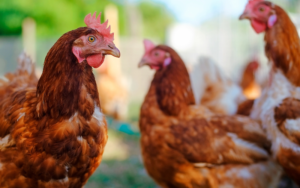
Over the past few decades, poultry farming has become the most dynamic and widespread type of animal husbandry in the world. Chickens, the main link in this industry, have gone far beyond traditional subsistence farming and have become the main source of animal protein for billions of people. Experts Club analysts have studied global changes in chicken breeding between 1990 and 2023, recording unprecedented growth and structural transformations in the industry.
“Poultry farming has become a symbol of the new consumer economy: fast production, low cost, adaptability to global demand. That is why chicken is replacing other types of meat around the world,” said Maksim Urakin, PhD in Economics and founder of the Experts Club information and analytical center.
In the early 1990s, the total number of chickens in the world was estimated at 10 billion (in thousands of heads). Even then, this figure exceeded the number of any other type of farm animal. However, the real leap forward took place in 2000–2020. By 2023, the total number of chickens in the world exceeded 29 billion, i.e., it almost tripled in three decades. This means that there are approximately 3.6 chickens per person on the planet, considering the total world population of over 8 billion.
This explosive growth can be explained by several key factors. First and foremost is economic efficiency. Chicken is the cheapest meat to produce, requiring significantly less feed, water, and time to raise than pork or beef. In the context of global urbanization, rising incomes, and changing eating habits, chicken has become a “universal” product: it is consumed equally in the US, Brazil, India, Indonesia, and Egypt.
In addition to economics, religious and cultural factors are equally important. Unlike pork and beef, which are restricted in consumption due to religious prohibitions in Islam, Judaism, and Hinduism, chicken is acceptable in almost all traditions.
This makes it a globally universal source of protein. “Chicken is a compromise protein. It is acceptable everywhere, inexpensive, quick to process, and that is why it has become the standard of the 21st century,” Urakin emphasized. Technical innovations play an equally important role.
From the 1990s to the 2020s, the poultry industry has undergone a technological revolution: automated incubators, genetically improved broilers, controlled growing conditions, biosecurity, and strict quality monitoring have become the norm in large agricultural countries. This has significantly increased the industry’s productivity. On average, the cycle of raising a broiler to market size has been reduced from 70 to 42 days.
Geographically, the largest chicken producers are China, the US, Brazil, India, Indonesia, and Russia. At the same time, African countries are experiencing rapid growth in domestic production, focused on both food security and reducing dependence on imports.
However, the growth dynamics of the livestock population also carries risks. The increasing density of chicken farming creates an increased epidemiological burden, which is particularly evident in the form of outbreaks of avian influenza. In addition, critics point to animal welfare issues, excessive use of antibiotics, and methane emissions from poultry farms.
“Modern poultry farming must find a balance between productivity and society’s ethical requirements. This is a new challenge that the industry has not faced before,” said Maksim Urakin.
In the coming years, further growth in chicken consumption is expected, particularly in low-income countries, as well as an expansion of exports from Brazil, Thailand, and Ukraine. However, alternative proteins — plant-based and cell-based products already entering the market — may pose increasing competition to poultry farming.
For a more detailed overview of trends in poultry farming and graphs showing changes in livestock numbers, see the video on the Experts Club YouTube channel.
agroanalytics, chickens, EXPERTS CLUB, global livestock farming, poultry farming, МАКСИМ УРАКИН
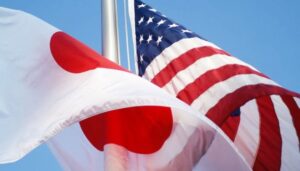
The administration of US President Donald Trump is stepping up pressure on key allies in the Indo-Pacific region, particularly Japan and Australia, demanding clear commitments on their role in the event of a war between the US and China over Taiwan, the Financial Times reports, citing informed sources.
“US Deputy Secretary of Defense for Policy Elbridge Colby has been actively raising this issue in recent months at meetings with representatives of the Japanese and Australian defense ministries. According to sources, this has surprised allies, as the US itself does not provide Taiwan with security guarantees,” the report said.
“Specific operational planning and exercises that are directly applicable to an unforeseen situation in Taiwan are being advanced with Japan and Australia,” one of the publication’s sources said.
However, the Japanese Ministry of Defense noted that the issue of an emergency situation in Taiwan is hypothetical and that responses to it should be based on national and international law. The Australian Embassy in the US declined to comment.
According to the publication, Colby’s efforts are part of Trump’s agenda to “restore deterrence and achieve peace through strength,” which includes calls for allies to increase defense spending.
It is also noted that Colby advocates revising the AUKUS security agreement, which allows Australia to acquire nuclear submarines, and calls on European allies to reduce their military presence in the Indo-Pacific region and focus on the Euro-Atlantic direction.
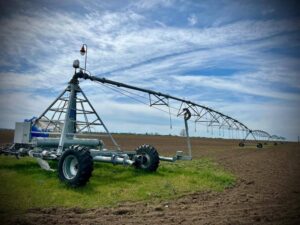
Deputy Prime Minister for Recovery, Minister of Community and Territorial Development Oleksiy Kuleba and Deputy Prime Minister, Minister of Foreign Affairs of Italy Antonio Tajani signed a grant agreement for EUR6 million in non-repayable aid for the reconstruction of two irrigation systems in the Odesa region,
according to the press service of the Ministry of Community and Territorial Development.
“This decision will improve the efficiency of agricultural production in southern Ukraine, stabilize water supply, and reduce resource losses in arid areas,” said Deputy Prime Minister for Recovery and Minister of Community and Territorial Development Oleksiy Kuleba.
The ministry added that the ministers signed a number of other agreements on financing key areas of recovery: agricultural infrastructure, cultural heritage sites, medical facilities, housing programs, and ensuring Ukraine’s access to Italian financial mechanisms.

Imports of transformers, inductors, and chokes to Ukraine in January-June 2025 increased 2.6 times compared to the same period in 2024, reaching $494.2 million, according to statistics from the State Customs Service.
According to the published data, China remains the largest supplier of these products to Ukraine — during this period, $407.5 million worth of these products were imported (82.5% of all imports of these goods), while a year earlier, $103.9 million worth of transformers and chokes were imported from this country (53.7%).
In addition, transformers were imported from Germany ($28.8 million) and Turkey ($15.3 million), while in January-June 2024, imports from Turkey amounted to $38.4 million, and from the Czech Republic – $7.2 million. In particular, in June, imports of this equipment increased 3.6 times compared to the same month last year, and almost doubled compared to May this year, to $103.4 million.
At the same time, Ukraine exported transformers, inductors, and chokes worth $13.7 million in the first half of this year, compared to $8.6 million last year, mainly to Germany, Hungary, and Poland.
According to the State Customs Service, imports of transformers, inductors, and chokes to Ukraine in 2024 more than doubled compared to 2023, reaching $596.11 million. with imports from China increasing 2.5 times to $400.48 million.
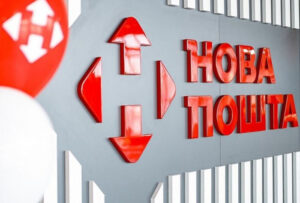
The European Bank for Reconstruction and Development (EBRD) has granted a loan of up to EUR50 million to Nova Poshta LLC, part of the Nova Group, to finance part of its capital investment program for 2025-2026.
According to the bank’s press release on Friday, the loan will be multi-currency with the option of drawing funds in hryvnia and euros and will consist of two tranches: the first tranche of EUR35 million will be provided upon signing, and the second tranche of EUR15 million will be reserved by the bank at its sole discretion.
According to the release, Nova Poshta’s development strategy supported by the loan includes improving physical infrastructure, optimizing and expanding the network, modernizing IT systems, improving energy management and restoring human capital, as well as decarbonization and wider access for women.
The total cost of the project is EUR69.1 million, according to the announcement.
The EBRD financing is guaranteed by a first loss guarantee covering 15% of the EBRD loan amount provided by the European Union (EU) under the Ukraine Investment Framework for Municipal Infrastructure and Industrial Resilience (UIF MIIR).
An investment grant of up to EUR1.5 million is also expected to be provided to support decarbonization and human capital restoration programs supported by the TaiwanBusiness-EBRD Technical Cooperation Fund and the Crisis Response Special Fund (CRSF).
According to the release, in 2024, Nova Poshta set a new record by delivering 429 million shipments, 16% more than in 2023, and the significant growth in demand, in turn, created a need for further expansion.
Nova Poshta is the main operating subsidiary of the Nova Group, which is owned by two Ukrainian businessmen, Vyacheslav Klimov and Volodymyr Poperechnyuk. It operates a network of over 39,000 service points and has around 33,000 employees in Ukraine, serving over 11 million customers every month.
The EBRD has been successfully cooperating with Nova Poshta since 2018, financing four of its projects during this time.
According to Nova Poshta’s financial report for the first quarter of 2025, its consolidated net income increased by 20.7% compared to the first quarter of last year, to UAH 14.3332 billion, while net profit decreased by 21.4%, to UAH 567.7 million. The ultimate beneficial owners of the company are Volodymyr Poperechnyuk and Vyacheslav Klimov.